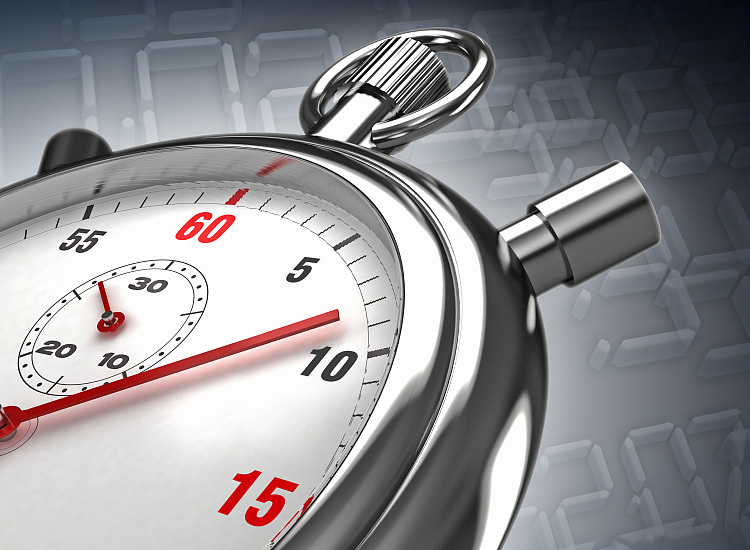NEWS CENTER

The Advantages of Using LCD Displays in High Temperature Timer Applications
The Advantages of Using LCD Displays in High Temperature Timer Applications Introduction to High Temperature Timer Movements In industrial settings, timers play a crucial role in ensuring processes run smoothly and efficiently. High temperature timer movements are designed to withstand extreme conditions, making them essential in various applications, from manufacturing to scientific research. T
The Advantages of Using LCD Displays in High Temperature Timer Applications
Introduction to High Temperature Timer Movements
In industrial settings, timers play a crucial role in ensuring processes run smoothly and efficiently. High temperature timer movements are designed to withstand extreme conditions, making them essential in various applications, from manufacturing to scientific research. The integration of **Liquid Crystal Display (LCD)** technology into these timers has revolutionized their usability. This article explores the many benefits of LCD displays in high-temperature environments, emphasizing their importance in enhancing performance, reliability, and user experience.
Understanding LCD Technology
What is an LCD Display?
LCD, or Liquid Crystal Display, is a flat-panel technology that uses liquid crystals to produce images. This technology is renowned for its energy efficiency, lightweight design, and ability to display clear images in various lighting conditions. In high-temperature timer applications, LCDs offer unique advantages over traditional display technologies.
How LCDs Work in High-Temperature Environments
LCDs operate by manipulating light through liquid crystals. In high-temperature settings, specialized LCDs are engineered to function effectively despite thermal stress. These displays often use enhanced materials and coatings to ensure visibility and durability, making them ideal for demanding industrial applications.
Key Benefits of LCD Displays in High Temperature Timer Movements
1. Enhanced Visibility and Readability
One of the primary advantages of LCD displays is their superior visibility. High-temperature LCDs are designed to maintain clarity and contrast even under harsh lighting conditions. This characteristic is crucial for timer applications, where quick reading of data can prevent errors and improve operational efficiency.
Improved Contrast Ratios
High-temperature LCDs typically offer better contrast ratios compared to other display technologies. This improvement allows operators to read timers from various angles and distances, reducing the chances of misinterpretation during critical processes.
2. Greater Durability and Reliability
LCD displays in high-temperature timer movements are engineered to withstand extreme conditions, including heat and vibration. These displays are resistant to thermal shock, which is vital in applications like automotive manufacturing or metal processing, where temperatures can soar.
Resistance to Wear and Tear
High-temperature LCDs often come with protective coatings that enhance their durability. These features make them less susceptible to scratches, chemical exposure, and other forms of damage, thus prolonging the lifespan of the timer units.
3. Energy Efficiency
Another significant benefit is the energy efficiency of LCD displays. They consume less power than traditional display technologies, which is crucial in industrial settings where energy costs can escalate.
Lower Heat Generation
By producing less heat, LCDs contribute to improved overall safety in high-temperature environments. They help maintain optimal operational conditions, reducing the risk of overheating equipment.
4. Versatile Applications
LCD displays are not limited to one specific type of timer application. Their versatility allows them to be used in various industries, including:
- **Manufacturing:** Ensuring precise timing in production lines.
- **Food Processing:** Monitoring cooking times under high heat.
- **Automotive:** Timing processes during engine testing.
This widespread applicability demonstrates the adaptability of LCD technology in high-temperature environments.
5. User-Friendly Interface
Modern LCD displays often come equipped with intuitive interfaces, making them easy to use. This user-friendliness is critical in industrial settings where operators must quickly understand and interact with the timer.
Touchscreen Capabilities
Many LCD timers feature touchscreen interfaces that allow for quick adjustments and programming. This innovation enhances user experience and reduces the time spent on training employees.
6. Real-Time Data Monitoring
LCD displays can provide real-time data feedback, which is invaluable for continuous processes. This capability allows operators to monitor performance closely and make necessary adjustments on the fly.
Integration with IoT Systems
The integration of LCD displays with Internet of Things (IoT) systems enhances their functionality. Timers can communicate data to centralized systems, facilitating better decision-making and process optimization.
Considerations for Implementing LCD Displays in High Temperature Timers
Choosing the Right LCD Technology
When selecting LCD displays for high-temperature applications, it's essential to consider the technology's specific attributes, including operating temperature range, response time, and durability against environmental factors.
Maintenance and Calibration
Regular maintenance and calibration of LCD timers ensure their longevity and reliability. Operators should be trained to perform routine checks that keep the displays functioning optimally, especially in environments subject to extremes.
Future Trends in LCD Technology for High Temperature Timer Movements
Advancements in Materials and Design
Research and development in LCD technology continue to push the boundaries of performance. Future advancements may include even more resilient materials and enhanced display capabilities, such as flexible screens and improved energy efficiency.
Integration with Advanced Automation Systems
As industries move towards automation, the role of LCD displays in timer movements will evolve. Enhanced integration with automation technologies may lead to smarter, more responsive systems capable of handling complex tasks with minimal human intervention.
FAQs about LCD Displays in High Temperature Timer Movements
1. How do LCD displays perform under extreme heat?
High-temperature LCD displays are designed to operate efficiently in elevated temperatures, utilizing specialized materials that withstand thermal stress without losing functionality.
2. Can LCD displays be used in outdoor applications?
Yes, certain high-temperature LCDs are rated for outdoor use, featuring enhanced brightness and anti-reflective coatings to ensure visibility in direct sunlight.
3. What industries benefit most from high-temperature LCD displays?
Industries such as manufacturing, automotive, food processing, and chemical production benefit significantly from high-temperature LCD displays due to their robustness and reliability.
4. Are LCD displays easy to read in low-light conditions?
Many modern LCD displays offer backlighting options, making them easy to read in low-light conditions while retaining clarity in bright environments.
5. How can I maintain my LCD timer for optimal performance?
Regular cleaning, calibration, and checking for software updates can help maintain the performance of your LCD timer. Always follow the manufacturer’s guidelines for maintenance.
Conclusion
In conclusion, the integration of LCD displays in high-temperature timer movements offers numerous advantages that enhance operational efficiency, durability, and user experience. From better visibility and energy efficiency to real-time data monitoring and ease of use, LCD technology is a game-changer in various industrial applications. As industries continue to evolve, so too will the capabilities of LCD displays, ensuring their place as a vital component in high-temperature timer solutions. Embracing this technology not only improves processes but also positions businesses for future success in an increasingly demanding landscape.
Related News
Laser particle counter and laser dust meter (PM2.5 dust detection
Dust particle counter (laser particle counter) and (Laser dust meter) PM2.5 dust Detector is the principle of laser scattering method for particulate matter detection equipment, but the application of the two fields are different. Dust particle counter is used in cleanroom, clean room to detect cleanliness level.
Competition pattern and development trend of instrument automation industry in recent years
In recent years, a large number of new enterprises into the instruments and meters low-end product market, from the scale and cost of the original leading enterprise products shocks, domestic well-known instrumentation manufacturers in the introduction of technology development, optimize the capital structure, expand business scope, as well as increase cooperation with well-known foreign companies have been strengthened, the market competition is more intense,
Timing/Counter PWM design points and application design reference
According to the characteristics of PWM (pulse width modulation (PWM: (Pulse width modulation) is a very effective mode to control analog circuits by using the microprocessor's digital output), the timing of the use of ATmega128。








